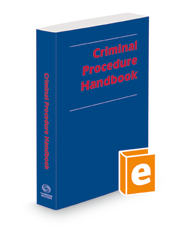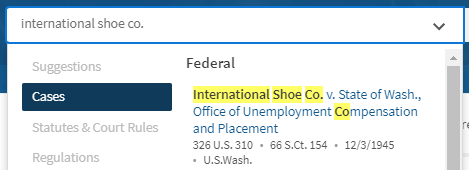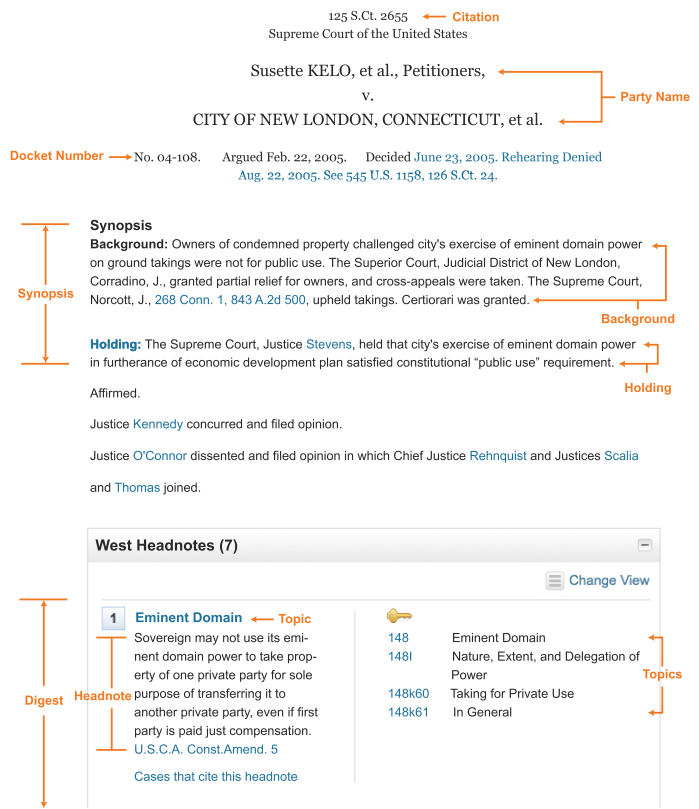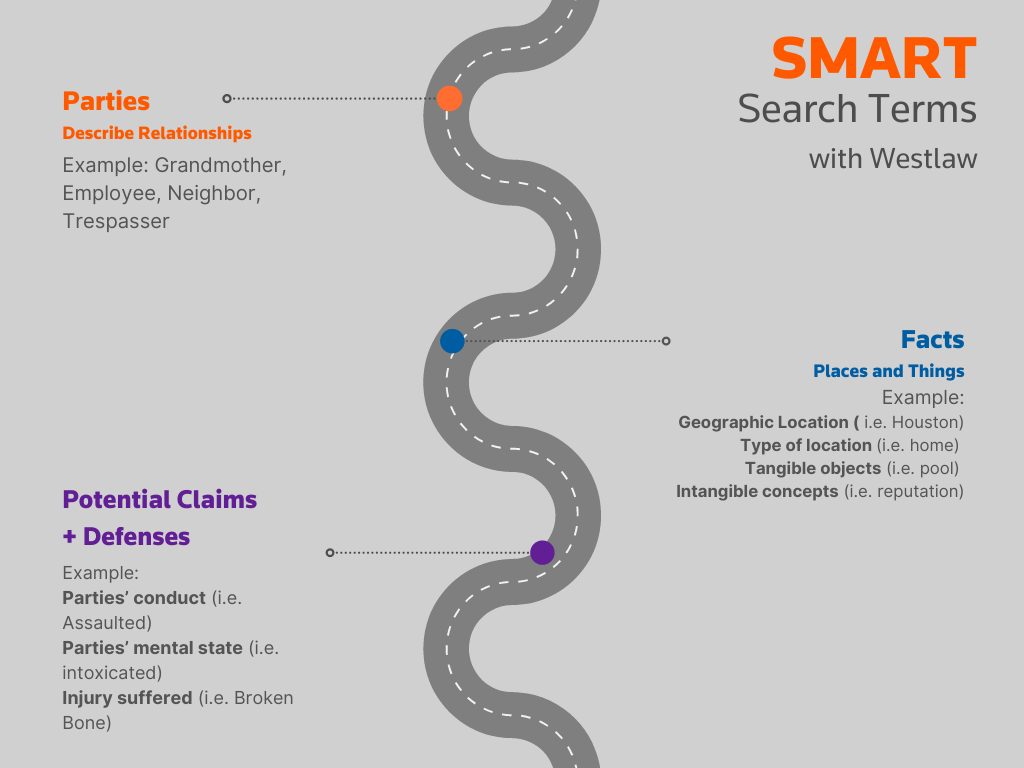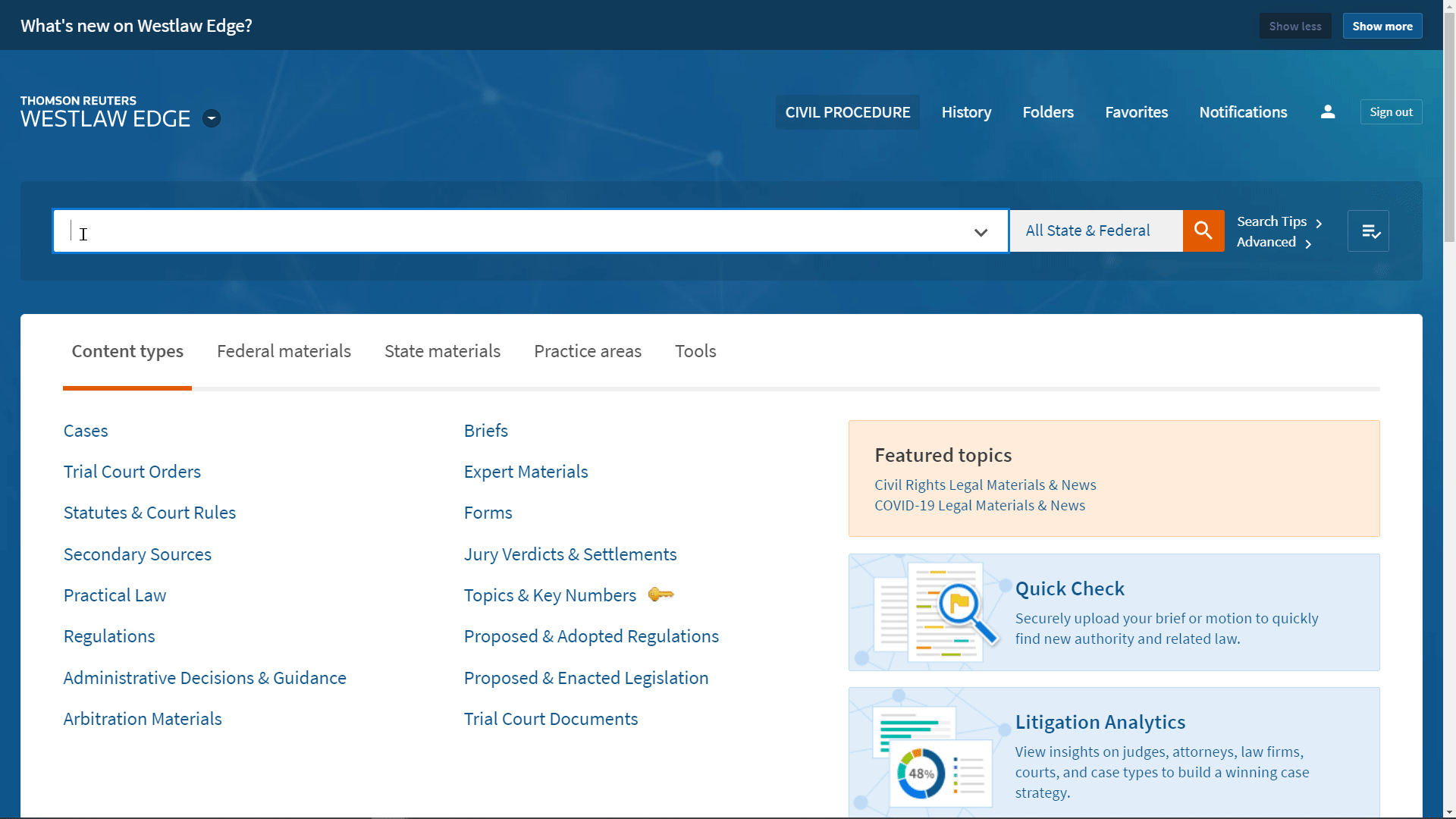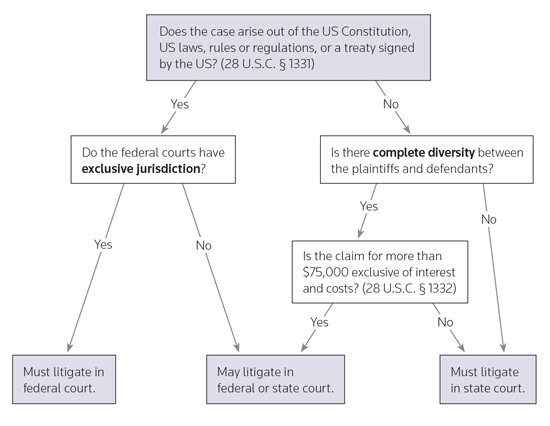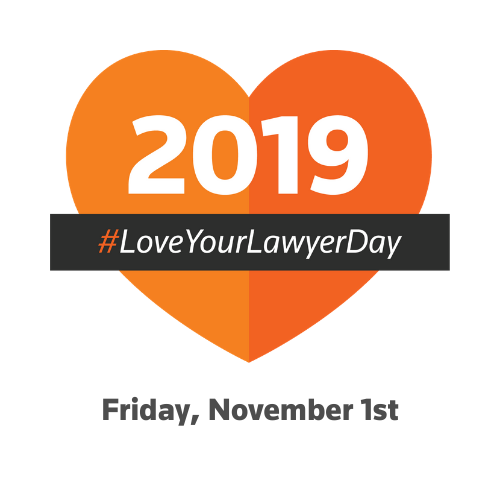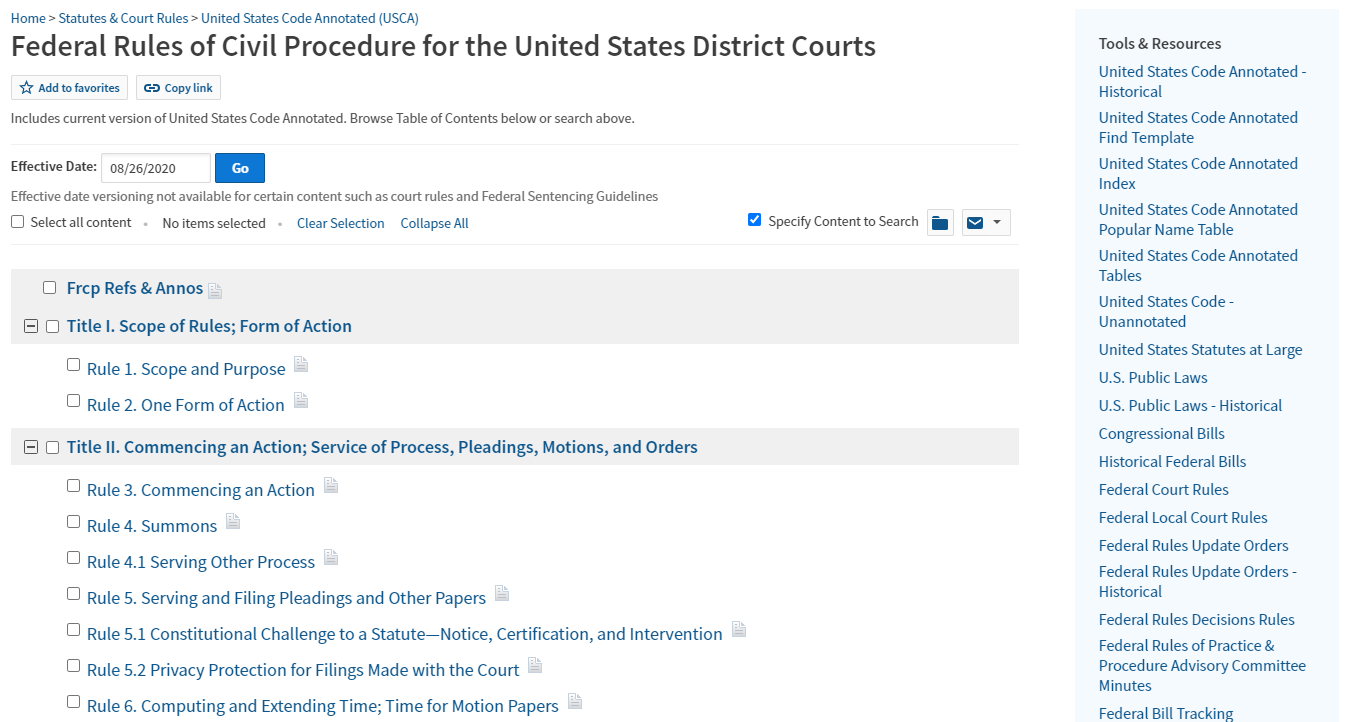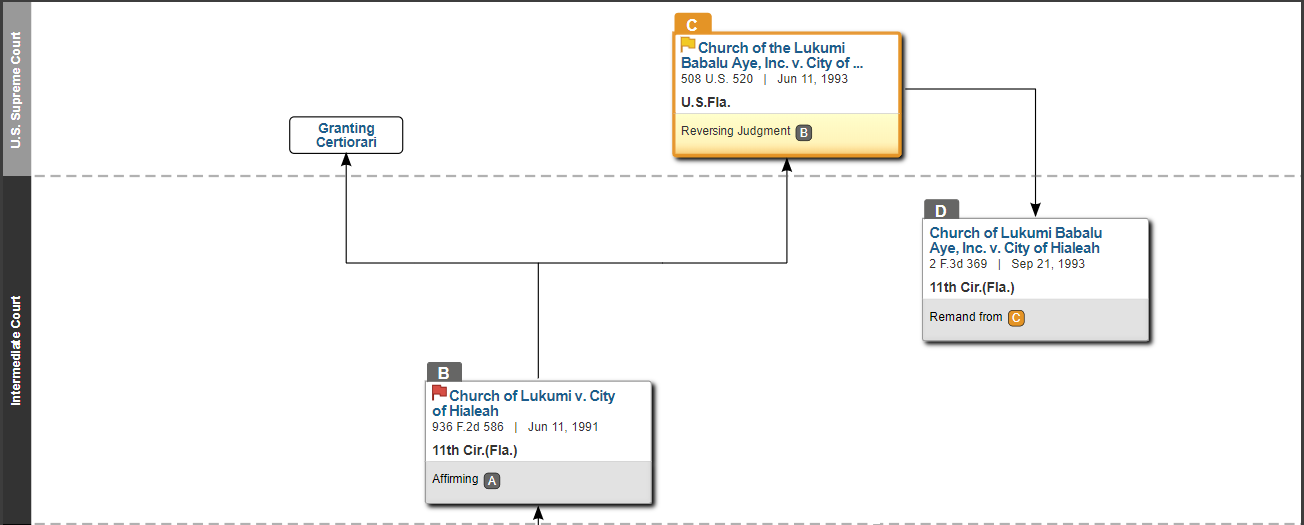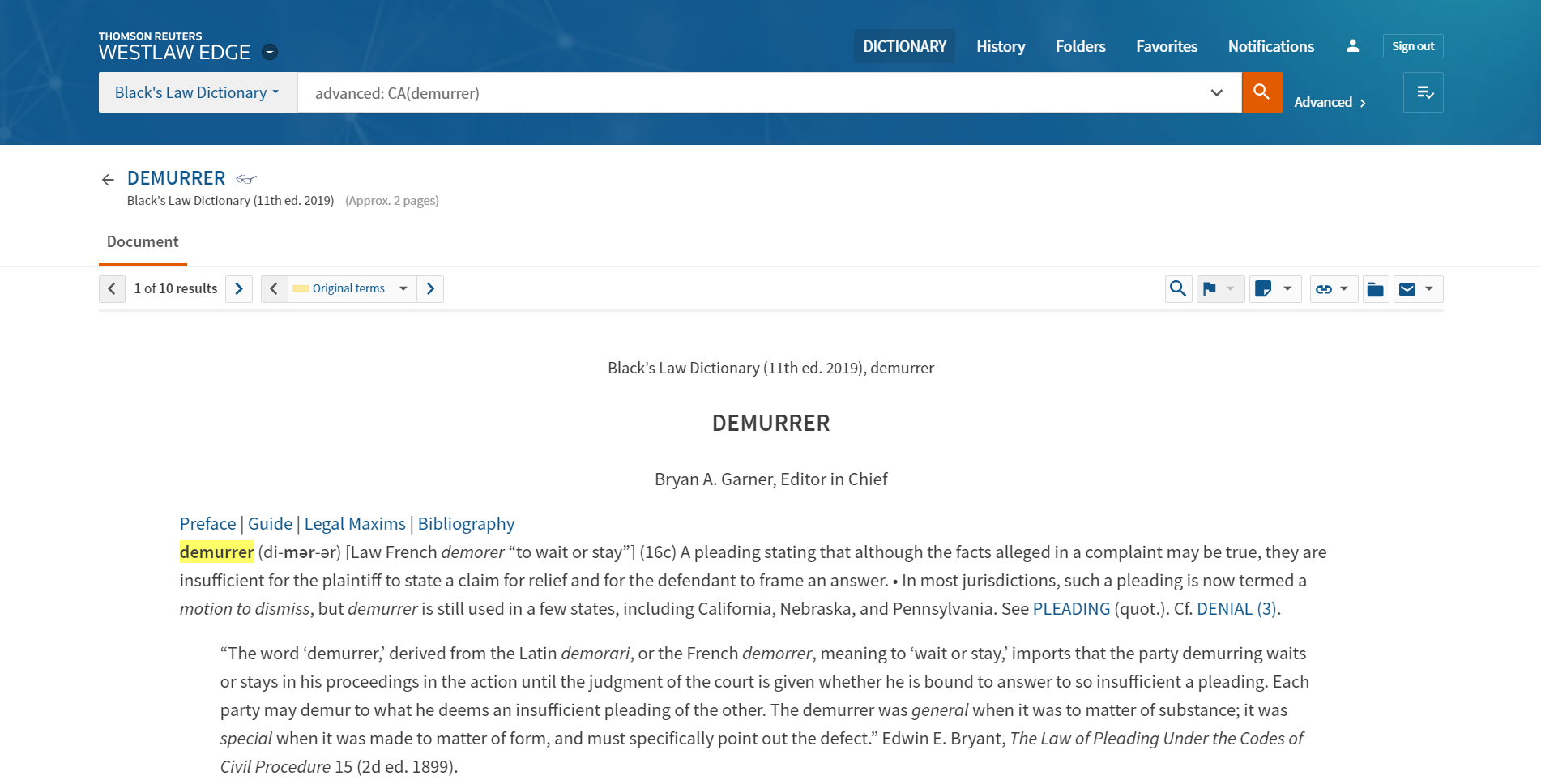LAW SCHOOL Survival Guide
Criminal Law
Resources to help you succeed in class and on the exam.
Criminal law: Rules & Guides
Know the rules. Enhance your understanding.

Model
Penal Code

Wharton's
Criminal Law

Search & Seizure: A Treatise on the Fourth Ammendment
Westlaw
Criminal Procedure Handbook
Analyzes more than 3,700 decisions relating to criminal procedure. Includes all the noteworthy federal and state decisions of the past year.
Black Letter Outline: Criminal Law

POWERED BY QUIMBEE
6 min.
Explained: Actus Reus
Begin learning about the fundamental elements of criminal liability with this discussion of actus reus (i.e., the act element of any crime).
POWERED BY QUIMBEE
5 min.
Case Brief Video:
United States v. Yermian
Rule of Law
The culpability requirement attached to the elements of a criminal offense does not apply to the jurisdictional language in the statute.
Yermian Facts, Issue, & Holding
Rule of Law
The culpability requirement attached to the elements of a criminal offense does not apply to the jurisdictional language in the statute.
Facts
Yermian (defendant) was hired as an employee of Gulton Industries, a contractor of the Department of Defense (DoD). By virtue of his position with Gulton, Yermian would have access to classified information and was therefore required to gain security clearance from the DoD. As part of this process, Yermian was asked to fill out a questionnaire. Though the questionnaire asked whether he had been charged with any violations of law, Yermian did not disclose an earlier conviction for mail fraud. Yermian also falsely reported that he had been employed by two companies for which he had never worked. A Gulton Security Officer typed Yermian’s responses. Yermian reviewed the typed document and signed a form certifying that his answers were true and that he understood he would be subject to prosecution under § 1001 of the United States Criminal Code, which makes it a crime to make false statements in a matter within the jurisdiction of a federal agency, if it was later discovered he provided false statements. The form was mailed to the DoD’s security-clearance office, where investigators found that Yermian had submitted false statements. Yermian later admitted that he answered dishonestly and was subsequently charged with violation of § 1001. At trial, Yermian admitted to having actual knowledge that his statements were false, but said he had no actual knowledge that his false statements would be communicated to a federal agency. Yermian requested a jury instruction requiring the government to prove both that there was actual knowledge of the falsity of the statements and actual knowledge the statements were made in a matter within federal jurisdiction. The district court rejected the request and instead instructed the jury that the government had to prove Yermian knew or should have known that the information was to be submitted to a government agency. Yermian’s objection to the instruction was overruled, and the jury convicted him. The Court of Appeals for the Ninth Circuit reversed.
Issue
Does the culpability requirement attached to the elements of a criminal offense apply to the jurisdictional language in the statute?
Holding and Reasoning (Powell, J.)
No. It is not necessary that a person committing a criminal act know, at the time, that the circumstances conferring jurisdiction according to the criminal statute are also present. In order to determine whether Congress intended culpability language to also modify jurisdictional language in a statute, a court must engage in careful statutory interpretation. A court should look to the explicit text of the statute and a natural reading of that text. Here, the statutory language requiring that false statements be made knowingly in any matter within the jurisdiction of a federal agency is a jurisdictional requirement; its main purpose is to distinguish the circumstances under which the federal government has proper authority to act. The construction of the statute makes it apparent that Congress did not intend the words “knowingly and willfully” to create a culpability threshold for the jurisdictional language of § 1001. The jurisdictional terms appear in a separate phrase from the forbidden conduct modified by “knowingly and willfully.” Any natural reading proves that the culpability standard is only meant to operate on the making of false or dishonest statements. There is therefore no valid reason for requiring proof that Yermian had actual knowledge of federal agency jurisdiction over the crime. Accordingly, the decision of the court of appeals is reversed.
Dissent (Rehnquist, J.)
Congress’s intention is unclear based on the text of the statute and the legislative history. The Court says “actual knowledge” is not the proper culpability standard, but does not say which standard is appropriate. The defendant should be granted a new trial with a jury instruction based on whatever standard is thought to be proper.
Powered by Quimbee
Criminal Law: Sample Exam
30 Minutes
Fact Pattern
A purchases a ticket to watch a Major League Soccer game live, at a stadium in her home town. A has front row seats for the game, just behind one of the two goals. During the game, the best and most powerful striker on the field, B, takes a shot towards the opposing team’s goal. This goal happens to be the goal behind which A is watching the game from a short distance away. The ball, traveling at 70 miles per hour, misses the goal and hits A in the head. A loses consciousness and collapses, striking her head on the concrete stadium floor and suffering a serious concussion. A concussion is a traumatic brain injury that causes a temporary loss of neurological function and may, in some cases, cause death.
A is immediately rushed to the emergency room in an ambulance. Because A is in critical condition, the ambulance drives at high speeds towards the emergency room, running red lights and speeding through busy intersections. When the ambulance arrives at the hospital, the emergency medical technicians (EMTs) rush to unload A from the ambulance. During the unloading process, one of the EMTs slips and drops A on the floor. Assume that the EMT’s actions amount to simple negligence, but not gross negligence.
Due to the drop, A hits her head on the concrete floor, causing a “second impact syndrome.” This is a fatal swelling of the brain, which can occur if a concussion victim suffers a second head trauma too soon after the trauma that initially caused a concussion. A dies.
Assume the prosecution could prove the above facts at B’s trial for homicide.
Applying common-law rules, did B cause A’s death? Explain, focusing solely on the issue of causation, but do not analyze B’s ultimate liability for homicide.
The question is whether B caused A’s death in a common-law jurisdiction. The answer is probably yes. The prosecution can establish that B was the actual cause, namely the but-for cause, of A’s death. The prosecution can probably establish that B proximately caused A’s death, as well, although this is a closer question.
Under the common law, causation has two components: (1) actual causation and (2) proximate causation. Both types of causation must be satisfied.
I. Actual causation
The first issue is whether B was the actual cause of A’s death. The answer is yes.
The most common test for actual causation is the but-for test. To establish but-for causation, the prosecution must show that A would not have died when she did, were it not for B’s actions. Here, if B had not kicked the soccer ball at A’s head, A would not have suffered a concussion, been rushed to the emergency room, been dropped on the concrete by an EMT, or died. As a result, the but-for test is clearly satisfied.
II. Proximate causation
The second, and much closer, question is whether B proximately caused A’s death. The answer is probably yes.
Proximate causation issues arise primarily when an intervening force comes into play after the defendant’s actions, but before the prohibited result occurs, and helps to cause the prohibited result. Under proximate causation, the question is when the intervening force (here, the conduct of third parties) is sufficiently out of the ordinary that it’s no longer fair to conclude that the social harm was caused by the defendant’s conduct, for purposes of criminal liability.
The proximate-causation inquiry is ultimately a question of fairness, to be determined under the common law by applying the following factors: (1) foreseeability of the intervening cause; (2) apparent-safety doctrine; (3) free, deliberate, informed human intervention; (4) de minimis causes; (5) omissions; and (6) the intended-consequences doctrine. Of these six factors, the first is the most important.
Note: It's possible that, of the listed factors, your instructor covered only the first, and most important, factor of foreseeability. If that's the case, please ignore the analysis in the sample answer on factors two through six.
A. Foreseeability of the intervening cause
The question under the first factor is whether the intervening cause was foreseeable. The answer is probably yes.
In answering this question, courts distinguish between responsive intervening causes and coincidental intervening causes. A responsive intervening cause is an event (usually an act) that occurs as a reaction to the defendant’s conduct. A responsive intervening cause does not relieve the defendant of criminal liability, unless the response was unforeseeable and highly abnormal. In contrast, a coincidental intervening cause does not occur in response to the defendant’s conduct, but only places the victim in the wrong place at the wrong time. A coincidental intervening cause relieves the defendant of criminal liability, unless the intervening cause was foreseeable.
In this case, the intervening cause is the EMT’s slipping and dropping A on the concrete floor. This cause was likely responsive to B’s conduct: when the EMT dropped A, A was on her way to the emergency room to receive treatment for the injury she suffered as a result of B’s actions.
This responsive intervening cause will not relieve B of liability, unless it was unforeseeable and highly abnormal. Courts have held that ordinary negligence in medical treatment is foreseeable, whereas gross negligence is highly abnormal. In this case, the facts state that the EMT’s dropping A amounted to simple, not gross, negligence. As a result, the responsive intervening cause does not relieve B of liability.
In sum, the foreseeability factor favors the prosecution, pointing towards B as a proximate cause of A’s death.
B. Apparent safety doctrine
The next factor asks whether the victim was in a position of apparent safety when the intervening cause affected her. A position of apparent safety means that the active, dangerous forces and events the defendant’s conduct set in motion have subsided or come to rest, so that the victim is no longer imperiled. If the victim was in a safe position, courts are less likely to the find that the defendant, the original actor, was the proximate cause of the victim’s death.
B will likely argue that A had reached a position of apparent safety when she was loaded into the ambulance, and was under the care of presumably competent medical personnel. B should not be liable, he will argue, for any accidents that happened after that point.
Although this is a close question, B’s argument will probably fail. Courts have held that if the active forces that the defendant’s conduct set in motion have come to rest, but the victim remains exposed to danger emanating from that conduct, then the defendant may still be found to be the proximate cause of any resulting injuries.
The facts state that, due to A’s critical condition, the ambulance carrying A was speeding through red lights and busy intersections, and the EMTs rushed to unload A from the ambulance. All this haste obviously made harmful accidents more likely to occur. Thus, A would not have truly reached apparent safety at least until she was safely in the hospital. Therefore, this factor probably favors the prosecution.
C. Free, deliberate, informed human intervention
The next question is whether the intervening cause was a free, deliberate, and informed human intervention. A defendant is more likely to be relieved of criminal responsibility where the intervening cause is a voluntary, knowing, and intelligent human actor, as opposed to a natural force. This factor cuts somewhat in favor of B, because the intervening force here was an EMT—a voluntary, knowing, and intelligent human actor. However, this factor does not weigh especially heavily in favor of B, because the EMT dropped A negligently, and not intentionally or with gross negligence.
D. De minimis causes
This factor asks whether B was a de minimis cause of A’s injury. The law generally will not hold a defendant criminally responsible for harm where the defendant’s conduct is a very minor but-for cause of the harm, and there is a far more substantial cause to whom responsibility may more fairly be attached.
B was not a de minimis cause of A’s injury. Rather, B’s errant shot at the goal caused a serious concussion to A, rendering A unconscious and putting her in a critical condition. Therefore, this factor favors the prosecution.
E. Omissions
The next question is whether the intervening cause was an omission, rather than an affirmative act. Omissions rarely supersede an earlier wrongful act.
Here, the intervening cause—the EMT’s dropping A on the ground—was an affirmative action, not an omission. As a result, this factor somewhat favors B.
F. Intended consequences doctrine
The final question is whether the intended-consequences doctrine applies. Under this doctrine, if an intentional wrongdoer gets what she wants, in the general manner she wants it, she cannot escape criminal responsibility even if an unforeseeable event intervenes. This doctrine does not apply, because B was not an intentional wrongdoer. B’s apparent intention was to score a goal for his team, not to cause a concussion to A or trigger a chain of events resulting in her death.
On balance: the omissions factor; the intended consequences doctrine; and the free, deliberate, and human intervention factor all favor B. In contrast, the foreseeability factor, the de minimis causes factor, and the apparent safety doctrine all favor the prosecution. The factors are roughly in balance. But because the most important factor—foreseeability—favors the prosecution, a court would likely hold that B was the proximate cause of A’s death.
In conclusion, B’s conduct was both the but-for cause and the proximate cause of A’s death.

Yeah, we love Quimbee too.
We've partnered with Quimbee to bring you content on this page. They make law school study aids, bar prep, and CLE courses you'll actually enjoy.
